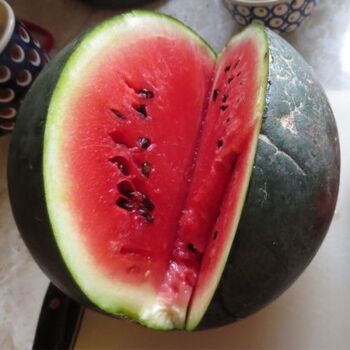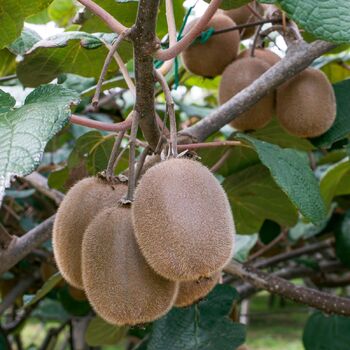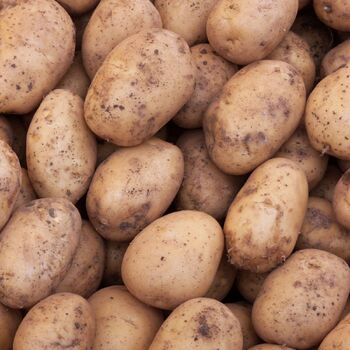Description
Seed Subscription: Vegetable, Sub-Tropical Climate, Winter 2024(WA)
Subscriptions are an excellent way to explore new seed varieties without having to spend time choosing the seeds yourself, and are perfect for busy gardeners, delivering seeds and all the information you need to plant them directly to your letterbox.
Each season we’ll choose a selection of seed varieties tailored to your climate, and send you the seeds plus a colour information sheet with photos, tips and sowing information - all you need to do is plant!
You are currently viewing a single season of seeds which can be purchased individually. To subscribe to a years worth of seeds click here.
Seeds included in this subscription:
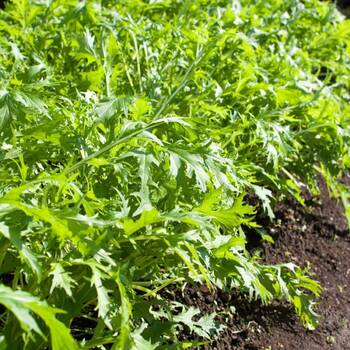
Mizuna
Serrated green leaves with a mild, spicy flavour. Can be used fresh in salads or cooked. Ideal for stir-fries, soups, and tolerates wet, cold conditions. Also known as "Japanese mustard". Suitable for microgreens and baby leaf production.
Sow direct or raise seedlings, 6mm. Germination 5-10 days @ 7-25°C.Annual. Rows 30cm, Spacing 30cm. 40-60 days.
Best months in Sub-Tropical Climates: MAR APR MAY JUN JUL AUG SEP OCT (Click for full sowing chart, grow guide and more)
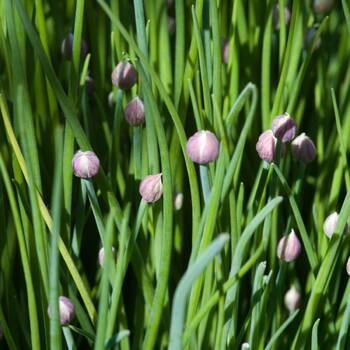
Chives
Perennial growing to 25cm. Grows in slowly spreading clumps. Plant has green, hollow, tubular leaves that have a mild onion flavour; used as a garnish, in sauces, dips, stews, casseroles, salads and soups. Can be grown in containers.
Sow direct, 5mm. Germination 7-14 days @ 18-21°C.Perennial. Height 25cm, Spacing 15cm. 60-90 days.
Best months in Sub-Tropical Climates: JAN FEB MAR APR MAY JUN JUL AUG SEP OCT NOV DEC (Click for full sowing chart, grow guide and more)
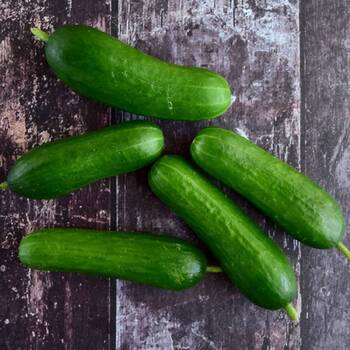
Cucumber- Lebanese
Summer salad vegetable. Smooth green skin with sweet crisp flesh growing to 22cm. Excellent for salads and pickling. Also known as "Beit Alpha".
Sow direct or raise seedlings, 10mm. Germination 4-10 days @ 18-35°C.Annual. Rows 120cm, Spacing 40cm. 60-70 days.
Best months in Sub-Tropical Climates: JAN FEB MAR JUL AUG SEP OCT NOV DEC (Click for full sowing chart, grow guide and more)
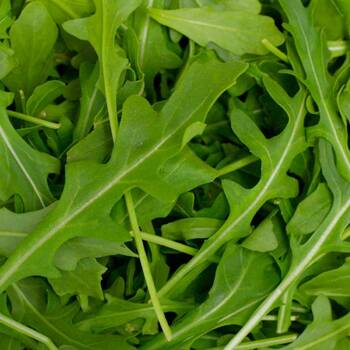
Rocket
Annual plant growing to 100cm. Has large, green, serrated leaves with a peppery taste. Mainly used in salads but can be cooked. Best when leaves are young and tender. Tolerates cold. Also known as Arugula and Roquette.
Sow direct or raise seedlings, 3mm. Germination 7-21 days @ 15-20°C.Annual. Rows 40cm, Height 100cm, Spacing 40cm. 60 days.
Best months in Sub-Tropical Climates: MAR APR MAY JUN JUL AUG SEP OCT (Click for full sowing chart, grow guide and more)
-
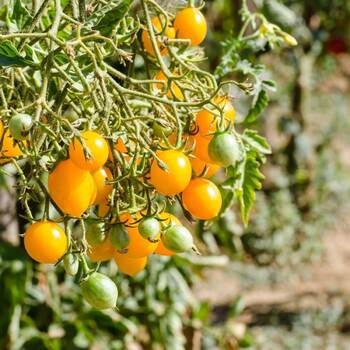
Tomato- Gold Nugget
Determinate bush tomato. Compact plants perfect for containers/small spaces. Abundant golden yellow cherry tomatoes in clusters. Tender, juicy fruit with sweet flavour, low acid. Early cropping, suited for cooler climates.
Sow direct or raise seedlings, 5mm. Germination 7-14 days @ 21-27°C.Annual. Rows 60-70cm, Height 65cm, Spacing 50cm. 70 days.
Best months in Sub-Tropical Climates: JAN FEB MAR AUG SEP OCT NOV DEC (Click for full sowing chart, grow guide and more)
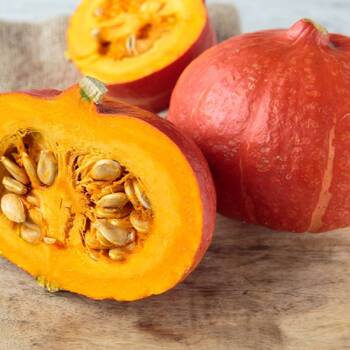
Pumpkin- Red Kuri
Popular Japanese variety with teardrop-shaped, orange fruits. Weighs around 3kg with sweet, nutty flavour. Good for baking, steaming, boiling, stuffing, frying, soups, stews, casseroles, desserts. Also known as Hokkaido, Potimarron.
Sow direct, 20mm. Germination 5-10 days @ 21-35°C.Annual. Rows 200cm, Spacing 100cm. 90 days.
Best months in Sub-Tropical Climates: JAN FEB MAR AUG SEP OCT NOV DEC (Click for full sowing chart, grow guide and more)
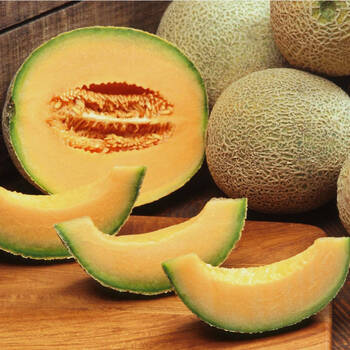
Rockmelon- Hales Best
Summer vine fruit. A popular variety that produces large fruit that grow to around 1kg. Fruit has heavily textured tan/green coloured skin with bright orange, sweet and juicy flesh. Resistant to mildew. Tolerates dry conditions.
Sow direct, 10mm. Germination 4-10 days @ 20-32°C.Annual. Rows 120cm, Spacing 60cm. 95 days.
Best months in Sub-Tropical Climates: JAN JUL AUG SEP OCT NOV DEC (Click for full sowing chart, grow guide and more)
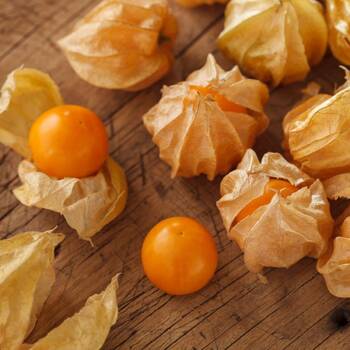
Cape Gooseberry- Dwarf
A dwarf Cape Gooseberry variant, growing to 90cm. Yields sweet, juicy golden fruit encased in a lantern-like calyx. Fruit is 3cm in diameter, can be eaten fresh or used in jams, desserts, pies, cakes, salads.
Raise seedlings, 4mm. Germination 14-42 days @ 21-29°C.Perennial (usually grown as an annual). Height 90cm, Spacing 30cm (annual), 100cm (perennial). 140 days.
Best months in Sub-Tropical Climates: JAN FEB MAR AUG SEP OCT NOV DEC (Click for full sowing chart, grow guide and more)
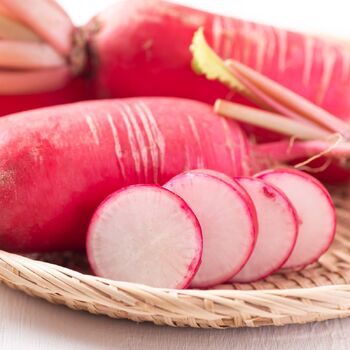
Radish- Mini Daikon Red F1
A biennial daikon-style radish with oval-shaped roots with bright red skin over tender, crisp white flesh. The flavour of the roots is both spicy and sweet. The leaves can also be eaten and have a hot, spicy flavour. Also known as 'Shunkyo'.
Sow direct, 10mm. Germination 3-14 days @ 8-30°C.Annual. Rows 30cm, Spacing 8cm. 50 days.
Best months in Sub-Tropical Climates: JAN FEB MAR APR MAY JUN JUL AUG SEP OCT NOV DEC (Click for full sowing chart, grow guide and more)

Dwarf Bean- Windsor Long Pod
Dwarf (bush) bean with long flat green pods and red seeds that grow to 20cm. Are almost stringless when picked young. Very prolific. Great flavour. Very popular home garden vegetable.
Sow direct, 20mm. Germination 6-10 days @ 16-30°C.Annual. Rows 50cm, Spacing 10cm. 55-60 days.
Best months in Sub-Tropical Climates: JAN FEB MAR APR AUG SEP OCT NOV DEC (Click for full sowing chart, grow guide and more)
Tips for gardening in winter:
Weeding and tidying: Rain helps weed seeds germinate and it is easier to remove them when the soil is damp. Be sure to remove weeds before they get a chance to mature and set seed, and ensure you get the weeds out roots and all. Hand tools are useful for small areas and hoes or tillers make the job go faster in larger gardens. Rake up fallen leaves so they don’t form a compact layer which can stop water reaching the soil. Add these extra leaves to your compost heap. Clear out any dead or diseased plants and to prevent the spread of disease, place this plant material in the bin rather than the compost bin.
Pruning: Check your tools. Cleaning and sharpening your secateurs and pruning saws makes the job much easier, and a clean cut means there is less chance for disease to enter ragged wounds. It is easier to prune deciduous trees and shrubs in winter because you can see the structure of the plant more clearly. Remove any dead wood, and take out crossing branches or stems that might rub against each other.
Watering: You may not need to water your plants as frequently in winter, but make sure your plants are still getting enough. If required, give them a deep soak once a week early in the day so that excess moisture can evaporate before nightfall and avoid the risk of fungal diseases.
Plot and plan: Use some of the down time in winter to review your garden and think about what you’d like to plant in the coming seasons. If you’re growing annuals, do you want to plant the same again, or try some new varieties or colour schemes? If you’re growing veggies, remember that crop rotation is a good idea to break the cycle or build-up of any pests and diseases that may be in the soil. This has the added benefit of reducing, or even eliminating, the need to spray with chemicals.
Pests and diseases to look out for in winter:
Slugs and snails: These pests can damage a wide range of plants, especially flower and vegetable seedlings. They are most active in the cooler wetter months, or when thunderstorms activate them in summer, and come out at night to feed. Controlling weeds and removing places that can harbour slugs and snails can be an effective way to control and reduce the number of these pests. If you choose to use bait, it is best applied in Autumn before snails get a chance to lay eggs. Most baits can be toxic to pets and other wildlife, so use any bait with caution.
Fungal diseases: A range of fungal diseases can occur in winter. You can prevent these from taking hold by practising good hygiene. Pick up any fallen and rotting fruit and put it into the rubbish, as it can cause disease which carries over into the following year’s crop.
Product code: SS_VEG_SUB_WIN_2024_WA
Contains
-

1 x Mizuna (Brassica juncea var. japonica)
Serrated green leaves have a mild but spicy flavour. Can be used fresh as a salad green or cooked as a leaf vegetable. Good in stir-fries and soups. Will tolerate wet and cold conditions. Sometimes called "Japanese mustard".
Good for microgreens and baby leaf production.
Life Cycle: Hardy Annual
Plant Height:
Position: Part or full sun, moist soil -

1 x Chives (Allium schoenoprasum)
Perennial growing to 25cm. Grows in slowly spreading clumps. Plant has green, hollow, tubular leaves that have a mild onion flavour; used as a garnish, in sauces, dips, stews, casseroles, salads and soups. Can be grown in containers.
Life Cycle: Hardy Perennial
Plant Height: 25cm
Position: Full sun, moist well drained soil -

1 x Cucumber- Lebanese (Cucumis sativus)
Summer salad vegetable. Smooth green skin with sweet crisp flesh growing to 22cm. Excellent for salads and pickling. Also known as "Beit Alpha".
Life Cycle: Frost tender Annual
Plant Height:
Position: Full sun, moist well drained soil -

1 x Rocket (Eruca sativa)
Annual growing to 100cm. Large green serrated leaves with a rich peppery flavour. Most commonly used as a salad green but can also be cooked as a leaf vegetable. Leaves are best when they are young and tender. Tolerates cold weather. Also known as Arugula and Roquette.
Life Cycle: Hardy Annual
Plant Height: 100cm
Position: Part or full sun, well drained soil -

1 x Tomato- Gold Nugget (Solanum lycopersicum)
Determinate bush style tomato. Small compact plants ideal for containers and small spaces. Producing an abundance of golden yellow cherry style tomatoes in clusters. Tender juicy fruit with a sweet flavour and low acid. Early cropping variety well suited to cooler climates.
Life Cycle: Frost tender Annual
Plant Height: 65cm
Position: Full sun, moist well drained soil -

1 x Pumpkin- Red Kuri (Cucurbita maxima)
Very popular Japanese variety. Fruits are teardrop shaped and have orange skin and smooth orange flesh. Fruit grows to around 3kg. Delicate, sweet and nutty flavour that is good baked, steamed, boiled, stuffed or fried and is often used in soups, stews, casseroles and desserts. High yielding. Long producing. Also known as Hokkaido and Potimarron.
Life Cycle: Frost tender Annual
Plant Height:
Position: Full sun, moist well drained soil -

1 x Rockmelon- Hales Best (Cucumis melo)
Summer vine fruit. A popular variety that produces large fruit that grow to around 1kg. Fruit has heavily textured tan/green coloured skin with bright orange, sweet and juicy flesh. Resistant to mildew. Tolerates dry conditions.
Life Cycle: Frost tender Annual
Plant Height:
Position: Full sun, moist well drained soil -

1 x Cape Gooseberry- Dwarf (Physalis peruviana)
A dwarf variety of the standard Cape Gooseberry growing to only 90cm. Produces sweet, juicy golden yellow fruit that is encased in a papery lantern like calyx. Fruit grows to around 3cm in diameter and can be eaten fresh or used in jams, desserts, pies, cakes and salads.
Life Cycle: Frost tender Perennial (usually grown as an annual)
Plant Height: 90cm
Position: Part or full sun, moist soil -

1 x Radish- Mini Daikon Red F1 (Raphanus sativus)
A biennial daikon-style radish with oval-shaped roots with bright red skin over tender, crisp white flesh. The flavour of the roots is both spicy and sweet. The leaves can also be eaten and have a hot, spicy flavour. This daikon is fast growing and slow to bolt.
This type of radish is used in northern Chinese cuisine and is also known as 'Shunkyo'.
Life Cycle: Hardy Annual
Plant Height:
Position: Full sun, well drained soil -

1 x Dwarf Bean- Windsor Long Pod (Phaseolus vulgaris)
Dwarf (bush) bean with long flat green pods and red seeds that grow to 20cm. Are almost stringless when picked young. Very prolific. Great flavour. Very popular home garden vegetable.
Life Cycle: Frost tender Annual
Plant Height:
Position: Full sun, well drained soil
Shipping
We deliver Australia wide.
All orders are dispatched from our warehouse in Knoxfield, Victoria, Australia.
We do not deliver overseas.
Shipping cost is calculated using all the items in your shopping cart and your delivery postcode. The table below outlines the delivery options and costs.
Order dispatch time is currently 1-3 business days plus delivery time.
Please note we are unable to guarantee specific delivery dates or delivery timeframes, all delivery times are estimates only.
| Order contains: | Delivery options: | Delivery cost per order | |
|---|---|---|---|
| VIC, NSW, ACT, QLD, TAS, SA, NT | WA | ||
| Small seed packets ONLY - | Economy Delivery | $3.00 or FREE on orders over $25 | $5 |
| Parcel Delivery | Capped rate of $8.99 | ||
| Express Delivery | $15.00 | ||
|
BULK seed, garden supplies, tools, or accessories - |
Parcel Delivery |
Capped rate of $8.99 |
|
|
Express Delivery |
Starting from $15.00 (Calculated by weight) |
||
| Live Plants - | Live plants | Capped rate of $10.00 | |
*All orders sent to Western Australia are subject to mandatory inspection and fees by Quarantine WA. These fees are included in all shipping costs above.
**We will replace all orders that are lost or damaged in transit however we will not replace or refund orders simply because they were delivered later than estimated. Full details here.
Ratings & Reviews
Be The First To Review This Product!
Help other The Seed Collection Pty Ltd users shop smarter by writing reviews for products you have purchased.




.png)



